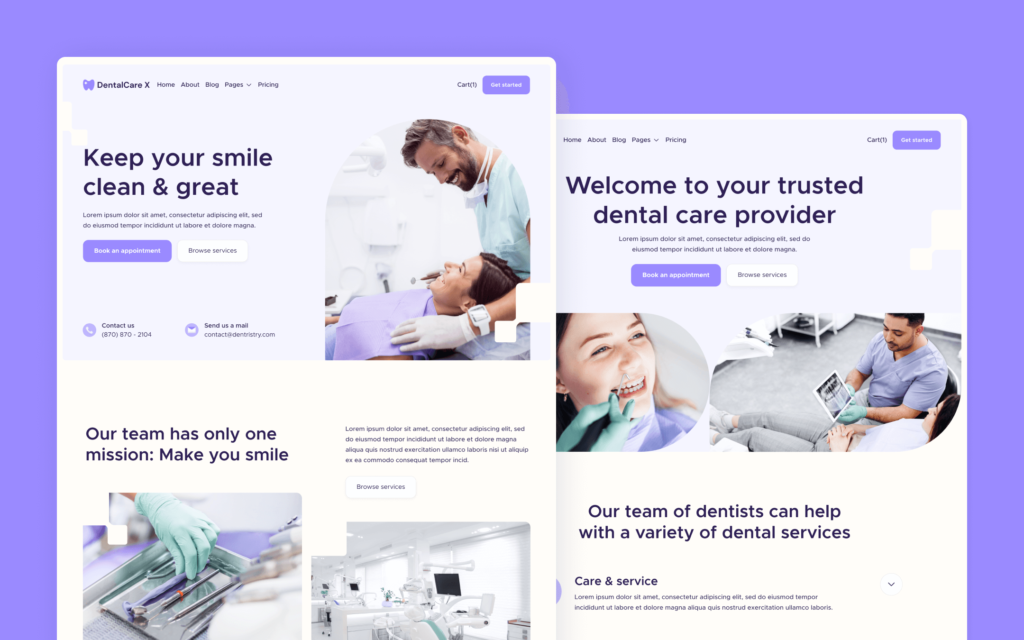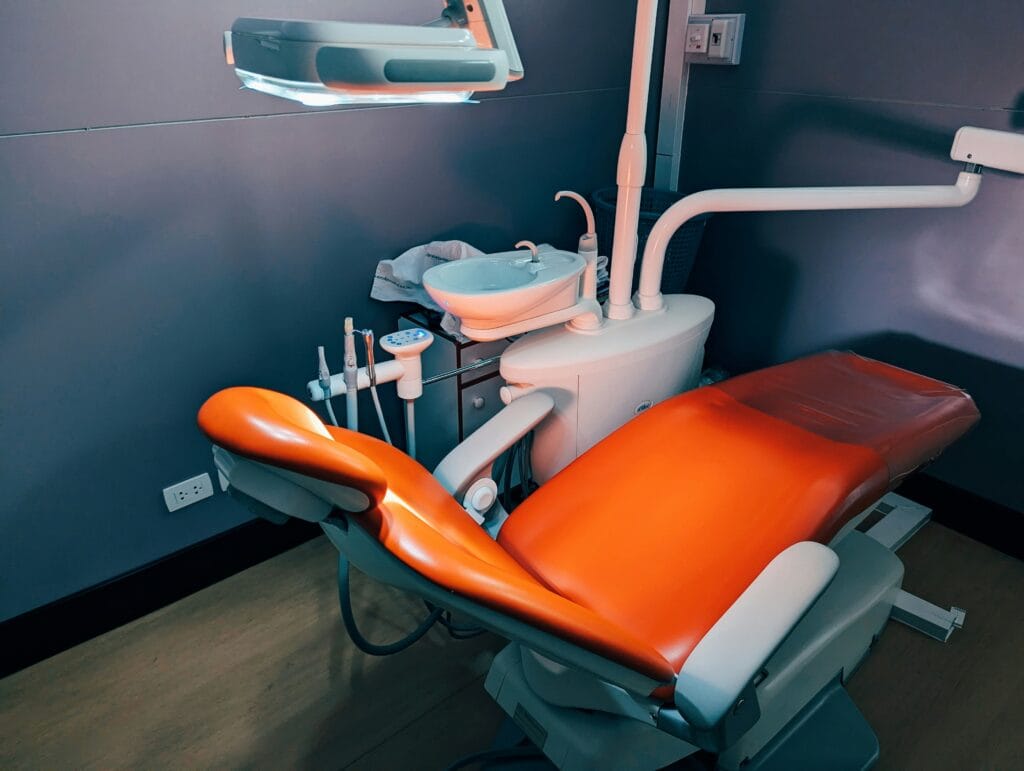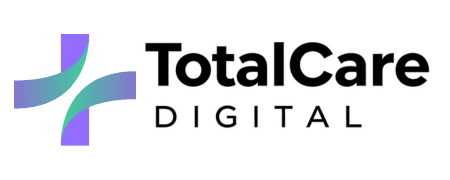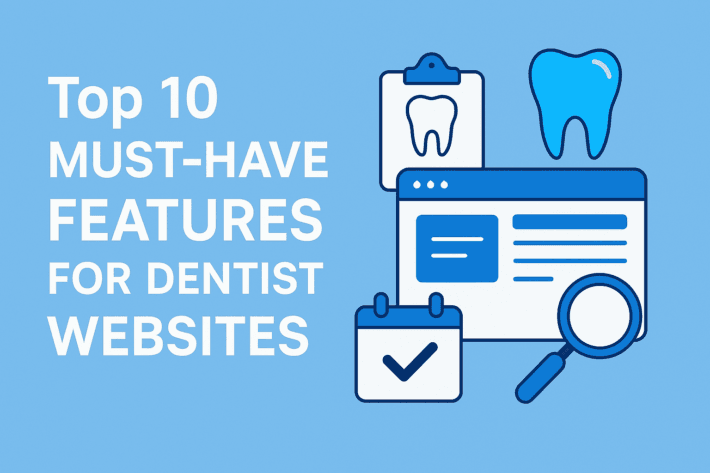Why Most Dental Clinic Website Designs Fail – And How to Ensure Yours Succeeds in 2025

In 2025, dental clinic website design provides more than just a digital business card — it’s your most powerful tool for patient acquisition, retention, and practice growth. Yet, many dental clinics still struggle with underperforming websites that fail to convert visitors into bookings.
A poor dental clinic website design doesn’t just frustrate users — it actively drives patients to your competitors. In this article, we’ll explore the most common reasons dental clinic websites fail and share practical strategies to ensure yours stands out in a highly competitive digital landscape.
The High Stakes of Dental Website Design in 2025
Whether you’re a boutique practice in Sydney’s Eastern Suburbs or a multi-chair operation in regional NSW, your website plays a critical role in shaping the first impression of your clinic. With digital-savvy patients comparing providers online before booking, a professional, user-friendly, and SEO-optimised dental clinic website design is no longer optional — it’s essential.
Did you know:
- 94% of users form an impression of a business based on website design (hubspot)
- 74% of patients check a clinic’s website before deciding to book (healthcareitnews)
- A slow or outdated site can increase bounce rates by over 80% (semrush)
Now let’s break down why so many dental websites underdeliver — and what to do differently.
Reason 1: Poor Mobile Experience
It’s no surprise that mobile browsing has overtaken desktop. Yet, many dental clinic websites are still designed with desktop-first layouts that break or slow down on smaller screens. In 2025, more than 70% of users are browsing on mobile devices. If your dental clinic website design isn’t tailored to mobile-first functionality, you’re already losing a majority of potential patients.
Common mobile design failures include unreadable font sizes, cluttered layouts, buttons that are too small to tap, intrusive pop-ups, and page elements that don’t scale properly. These mistakes aren’t just cosmetic. They directly affect how users interact with your site and whether they choose to engage further. Google’s Core Web Vitals also factor in mobile usability, which means poor performance on mobile devices can significantly harm your search rankings.
Today’s dental patients expect a seamless mobile experience. That means your website should load fast, adjust perfectly to any screen size, and prioritise essential information like services, contact details, and booking options.
Fix it: Start by using Google’s Mobile-Friendly Test to identify major issues. Partner with agencies that specialise in responsive Website Design And Development for dental practices. Ensure your design is created with mobile-first indexing in mind, and test on multiple devices before launch.

Reason 2: Slow Page Load Speed
Page speed is one of the most overlooked aspects of effective dental clinic website design. While visual appeal is important, your site must also load quickly. Research shows that even a one-second delay in page loading time can result in a 7% reduction in conversions. For dental clinics, that translates directly into fewer online bookings, phone calls, and patient enquiries.
Websites often become slow due to oversized images, uncompressed video files, outdated CMS plugins, or overloaded servers. Additionally, many dental clinics rely on budget hosting platforms that don’t prioritise performance. In competitive local markets like Sydney or Brisbane, slow websites can push potential patients to a faster-loading competitor’s site.
Page speed is also a direct Google ranking factor. In 2025, Google continues to emphasise user experience signals, meaning that laggy sites will struggle to achieve visibility on search engines. Furthermore, a fast website supports better mobile performance, lower bounce rates, and improved engagement metrics.
Fix it: Use tools like Google PageSpeed Insights or GTmetrix to evaluate your site. Optimise image sizes, leverage browser caching, implement lazy loading, and use a content delivery network (CDN). Consider switching to a premium Hosting And Maintenance service that understands the specific needs of dental clinics.
Reason 3: Confusing User Experience (UX)
User experience is where many dental clinic websites truly fall apart. A confusing or chaotic layout undermines patient trust, even if the content is technically correct. Dental patients are often nervous or time-poor; they want quick access to services, team info, and booking options — not to click through five pages to find your phone number.
Bad UX typically manifests as poor menu navigation, excessive scrolling, or multiple CTAs competing for attention. Some websites overwhelm users with auto-play videos, flashing offers, or outdated designs from five years ago. Even worse, some bury important trust-building content like practitioner bios, patient testimonials, or clinic accreditations under layers of clicks.
A strong dental clinic website design must be intuitive. Your menu should be simple and visible. Your homepage should communicate who you are, what you do, and what the user should do next. Calls-to-action (like “Book an Appointment”) must be prominently displayed on every page. Trust markers such as industry memberships, reviews, and recognisable clinic branding should be strategically placed to guide conversion.
Fix it: Prioritise UI/UX focused on patient-friendly journeys. Review our Top 10 Must-Have Features in Modern Dental Website Design (2025 Edition) for practical design inclusions. Test your site with real patients to uncover hidden friction points.
Reason 4: Lack of SEO Strategy
No matter how polished your website looks, it’s ineffective without visibility. Many dental clinic website designs fail because they are built without a foundational SEO strategy. In 2025, on-page and local SEO are more critical than ever for attracting new patients online.
Key issues include missing meta titles, duplicated content, poorly structured URLs, and no schema markup for business data. Additionally, many dental websites lack individual pages for core services (like veneers, implants, or Invisalign), meaning search engines can’t match those pages to specific patient queries.
Local SEO also plays a crucial role. If your dental clinic doesn’t appear on Google Maps or local packs when someone searches for “dentist near me,” you’re invisible to your most relevant audience. Google My Business setup, location-specific landing pages, and consistent NAP (name, address, phone number) citations are all essential.
Fix it: Start with an audit using SEMrush or Moz Pro. Align your site with SEO services designed for health clinics. Expand your online presence by referencing SEO for Dentists: How to Attract More Local Patients to Your Clinic, and implement schema, targeted keywords, and suburb-specific content.

Reason 5: No Online Booking or Call-to-Action (CTA)
One of the most practical failures in dental clinic website design is the lack of a clear, accessible call-to-action. Patients are ready to take action when they visit your site — if you make it hard or confusing to do so, they’ll leave.
Too often, clinics either hide their booking form on one obscure page or use clunky third-party systems that don’t integrate well. Some rely solely on phone bookings, neglecting the growing demand for 24/7 online appointment scheduling. Worse, some websites use multiple CTAs that confuse users: “Book Now,” “Request Info,” “Enquire Here,” and “Subscribe” all competing for attention.
In 2025, patients expect the convenience of online interactions. From booking their clean to confirming with SMS, everything should be intuitive and mobile-ready. Your CTAs must be specific, visible, and action-oriented. A fixed “Book Now” button that scrolls with the user is a proven conversion booster.
Fix it: Use purpose-built Appointment System Integration solutions. Make booking functionality persistent on desktop and mobile. Consider enhancements such as Website Chatbots for instant communication. Highlight your CTA in a contrasting colour and position it above the fold.
Reason 6: Lack of Trust Signals and Proof
In healthcare, trust is paramount. A beautiful design means nothing if users question your credibility. Many dental websites skip over essential social proof elements like patient testimonials, before-and-after photos, or dentist credentials. Others rely too heavily on generic stock photos, which reduce authenticity.
Patients want assurance that they are making a safe, informed choice. Seeing the dentist’s photo, credentials, and a short bio helps build rapport. Accreditation logos, awards, memberships, and Google reviews reassure potential patients they are choosing a respected provider. These elements should not be afterthoughts — they should be woven into the fabric of your site.
Fix it: Include a testimonials slider on the homepage and service pages. Use real patient stories where possible (with consent). Add a “Meet the Team” section with photos and bios. Implement a Reputation Management system to showcase positive reviews automatically. Reference Dental Web Design That Attracts New Patients: What Every Clinic Needs to Know for further credibility strategies.
Checklist: What Every Dental Clinic Website Needs in 2025
To ensure your website succeeds this year and beyond, it must:
- Be mobile-optimised and fast-loading
- Include online booking functionality
- Clearly list services and contact information
- Be SEO-friendly and locally targeted
- Show credibility via reviews, accreditations, and bios
- Feature modern, clinic-appropriate visuals and content
- Comply with privacy regulations and accessibility standards
Use Why Great Dental Website Design Is the #1 Lead Generator for Your Clinic and Importance of SEO Service Experts for Vet and Health to compare your current website against best practices.

Final Thoughts
In 2025, having a dental clinic website design that actually works means investing in more than just visuals. It means creating an online experience that patients trust, search engines recognise, and your practice grows from.
If your current site isn’t ticking these boxes, it’s not too late. A strategic redesign grounded in patient-first thinking and SEO performance can turn your website from a digital brochure into a powerful engine for growth.
Need help evaluating your current site? Start with Digital Audit or reach out for a tailored plan via Get A Quote.



